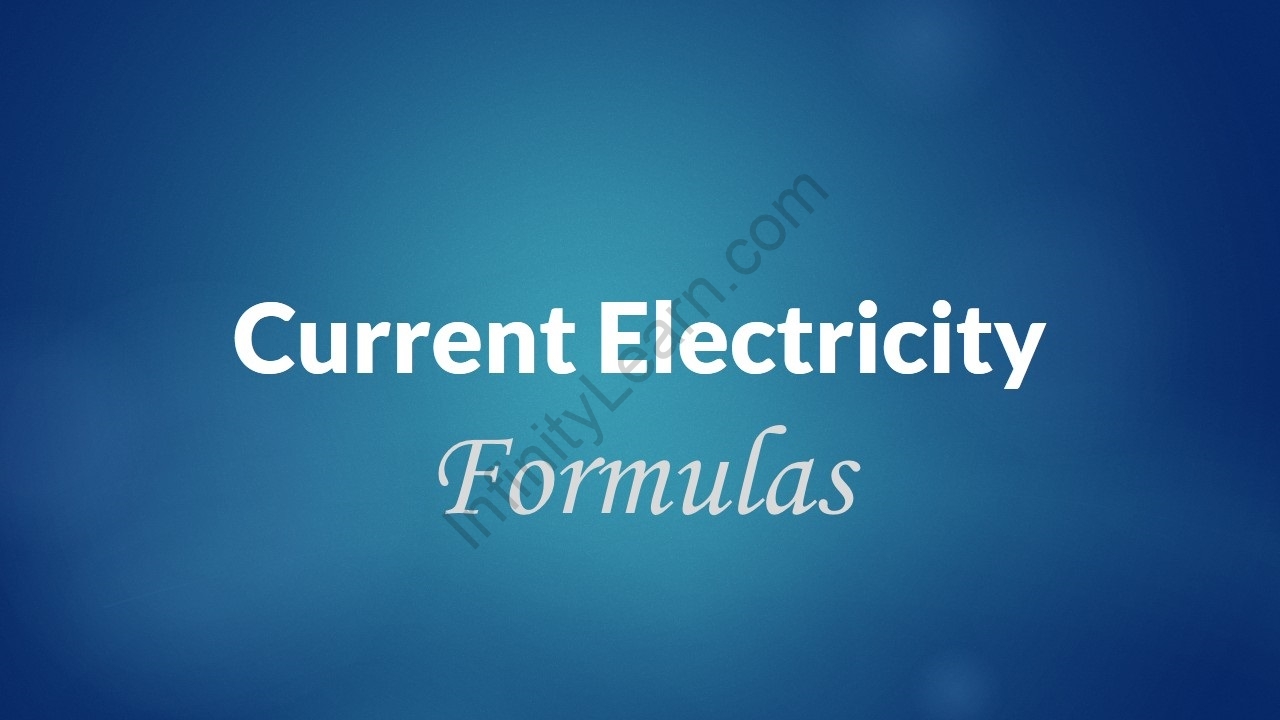Table of Contents
Introduction
The passage of charges via a wire is known as electric current. The units of measurement for current are amperes. The circuit must be closed in order for the charge to pass through it. To put it another way, the line from the power supply to the circuit and back must be unbroken. If there is a potential difference, current flows across the circuit. In this article, we shall learn about the different Current and Electricity Formulas that can come handy in JEE exams.
Current and Electricity Formulas
1. Current
I = neAVd
The number of free electrons per unit volume is denoted by n.
A is the cross-sectional area.
The electron’s charge is denoted by the letter e.
Vd is the drift velocity.
2. Current Density
j = i/A = σE
i is the current
The letter A represents the cross-sectional area.
The electric density is denoted by E.
σ is the conductivity.
3. Wire resistance
R =ρl/A, where ρ=1/σ
ρ is the resistivity
σ is the conductivity.
4. Temperature dependence of resistance
R=R0(1+ αΔT)
R0 is the original resistance
R is the resistance at temperature T
α is the temperature coefficient of resistance.
5. Ohm’s law
V=IR
The voltage is represented by the letter V.
I is the current
R stands for resistance.
6. Kirchhoff’s Law
(i) Junction Law: The algebraic total of all currents flowing into a node is zero.
i.e., ∑node Ii=0.
(ii) The Loop Law: In a circuit, the algebraic total of all potential differences in a closed loop is zero.
i.e., ∑loop ΔVi=0.
7. Parallel resistance
1/Req = 1/R1 +1/R2
8. In-series resistance
Req = R1 +R2
9. Electric Power
P = V2/R=I2R =IV
10. Charging of capacitors
q(t) = CV(1- e-t/RC)
11. Discharging of capacitors
q(t) = q0e-t/RC
12. Time Constant in RC circuit
τ = RC
13. Faraday’s law of electrolysis
The amount of mass deposited is
m= Zit = (1/F)Eit
Where I denotes the current and t denotes the time.
Z stands for the electrochemical equivalent.
The chemical equivalent is E.
The Faraday constant is F = 96485 C/g.
14. Wheatstone bridge
In a Wheatstone bridge that is well-balanced,
R/S = P/Q
Make your IIT Dream come true with Infinity Learn.
FAQs
Is it necessary to have current electricity for JEE mains?
One of the most significant topics in the IIT JEE syllabus is Electric Current. In the test, about 2-3 questions are always asked from this chapter.
What is the current electricity power formula?
The watt is the SI unit of power. Power = Work/Time is the formula. Resistance, on the other hand, is defined as the impediment to the flow of current via a conductor. The resistance is defined by Ohm's law as R = V/I, where V is the voltage (volts) and I is the current (ampere).
In current electricity, what is E?
The current density is represented by the letter j. The current density is measured in SI units of A/m2. Furthermore, if E is the amplitude of the uniform electric field in a conductor with a length of l, then V is the potential difference across the conductor.
Infinity Learn App
Now you can find answers to all your subject queries & prepare for your Exams on our Ultimate Learning App for CBSE and K-12 – Infinity Learn.





